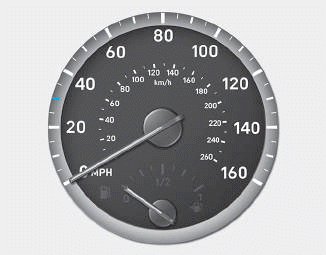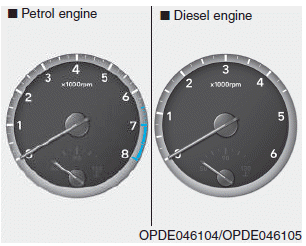Hyundai i-30: Brake System / Troubleshooting
Hyundai i30 (PD) 2018-2025 Service Manual / Brake System / Troubleshooting
| Troubleshooting |
| Problem Symptoms Table |
Use the table below to help you find the cause of the problem. The numbers indicate
the priority of the like cause of the problem. Check each part in order.
If necessary, replace these parts.
|
Symptom |
Suspect Area |
Reference |
|
Lower pedal or spongy pedal |
1. Brake system (Fluid leaks) 2. Brake system (Air in) 3. Piston seals (Worn or damaged) 4. Rear brake shoe clearance (Out of adjustment) 5. Master cylinder (Inoperative) |
repair air·bleed replace adjust replace |
|
Brake drag |
1. Brake pedal free play (Minimum) 2. Parking brake lever travel (Out of adjustment) 3. Parking brake wire (Sticking) 4. Rear brake shoe clearance (Out of adjustment) 5. Pad or lining (Cracked or distorted) 6. Piston (Stuck) 7. Piston (Frozen) 8. Anchor or Return spring (Inoperative) 9. Booster system (Vacuum leaks) 10. Master cylinder (Inoperative) |
adjust adjust repair adjust replace replace replace replace replace replace |
|
Brake pull |
1. Piston (Sticking) 2. Pad or lining (Oily) 3. Piston (Frozen) 4. Disc (Scored) 5. Pad or lining (Cracked or distorted) |
replace replace replace replace replace |
|
Hard pedal but brake inefficient |
1. Brake system (Fluid leaks) 2. Brake system (Air in) 3. Pad or lining (Worn) 4. Pad or lining (Cracked or distorted) 5. Rear brake shoe clearance (Out of adjustment) 6. Pad or lining (Oily) 7. Pad or lining (Glazed) 8. Disc (Scored) 9. Booster system (Vacuum leaks) |
repair air·bleed replace replace adjust replace replace replace replace |
|
Noise from brake |
1. Pad or lining (Cracked or distorted) 2. Installation bolt (Loosen) 3. Disc (Scored) 4. Sliding pin (Worn) 5. Pad or lining (Dirty) 6. Pad or lining (Glazed) 7. Anchor or Return spring (Faulty) 8. Brake pad shim (Damage) 9. Shoe hold-down spring (Damage) |
replace adjust replace replace clean replace replace replace replace |
|
Brake fades |
1. Master cylinder (Inoperative) |
replace |
|
Brake vibration, pulsation |
1. Brake booster (Vacuum leaks) 2. Pedal free play 3. Master cylinder (Inoperative) 4. Caliper (Damage) 5. Master cylinder cap seal 6. Damaged brake lines |
replace adjust replace replace replace replace |
|
Brake Chatter |
Brake chatter is usually caused by loose or worn components, or glazed or
burnt linings. Rotors with hard spots can also contribute to brake chatter.
Additional causes of chatter are out-of-tolerance rotors, brake lining not
securely attached to the shoes, loose wheel bearings and contaminated brake
lining. |
|
 Special service tools
Special service tools
Special Service Tools
Tool (Number and Name)
Illustration
Use
09581-2T100
Piston expander
Spreading the front disc brake piston...
 Brake System
Brake System
..
Other information:
Hyundai i30 (PD) 2018-2025 Service Manual: Center Pillar Trim
Components and components location Component Location 1. Center pillar lower trim 2. Center pillar upper trim Repair procedures Replacement [Center pillar lower trim] • Put on gloves to prevent hand injuries...
Hyundai i30 (PD) 2018-2025 Service Manual: Panorama Sunroof Assembly
Repair procedures Removal • In order to remove panorama sunroof assembly use tools as follows. [Tools block diagram] ① Square wire ② Insert type wire grip [Tools assembly diagram] • Tighten square wire ① inserting it in the hole of Insert type wire grip ② 1...
Categories
- Manuals Home
- 3rd Generation i30 Owners Manual
- 3rd Generation i30 Service Manual
- Cruise control
- Light bulbs
- Theft-alarm system
- New on site
- Most important about car
Gauges and meters
Speedometer

The speedometer indicates the speed of the vehicle and is calibrated in kilometers per hour (km/h) and/or miles per hour (MPH).
Tachometer

Copyright © 2025 www.hi30.net
